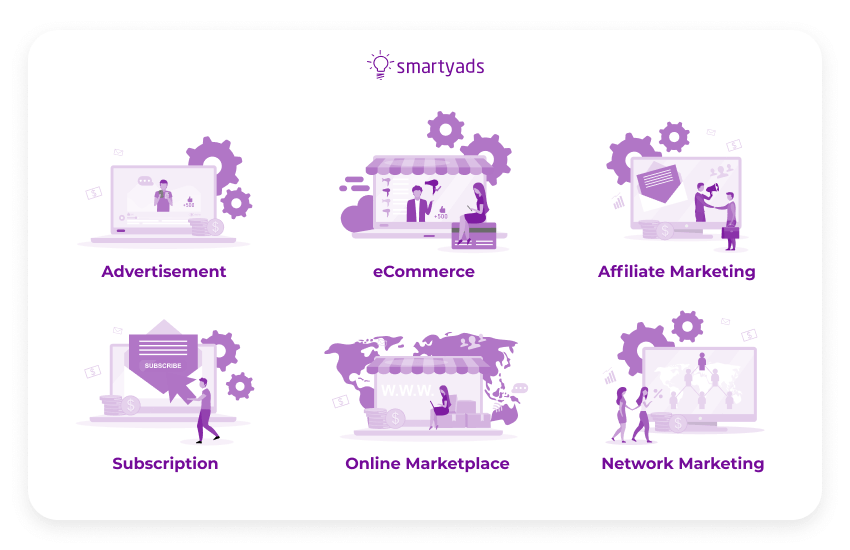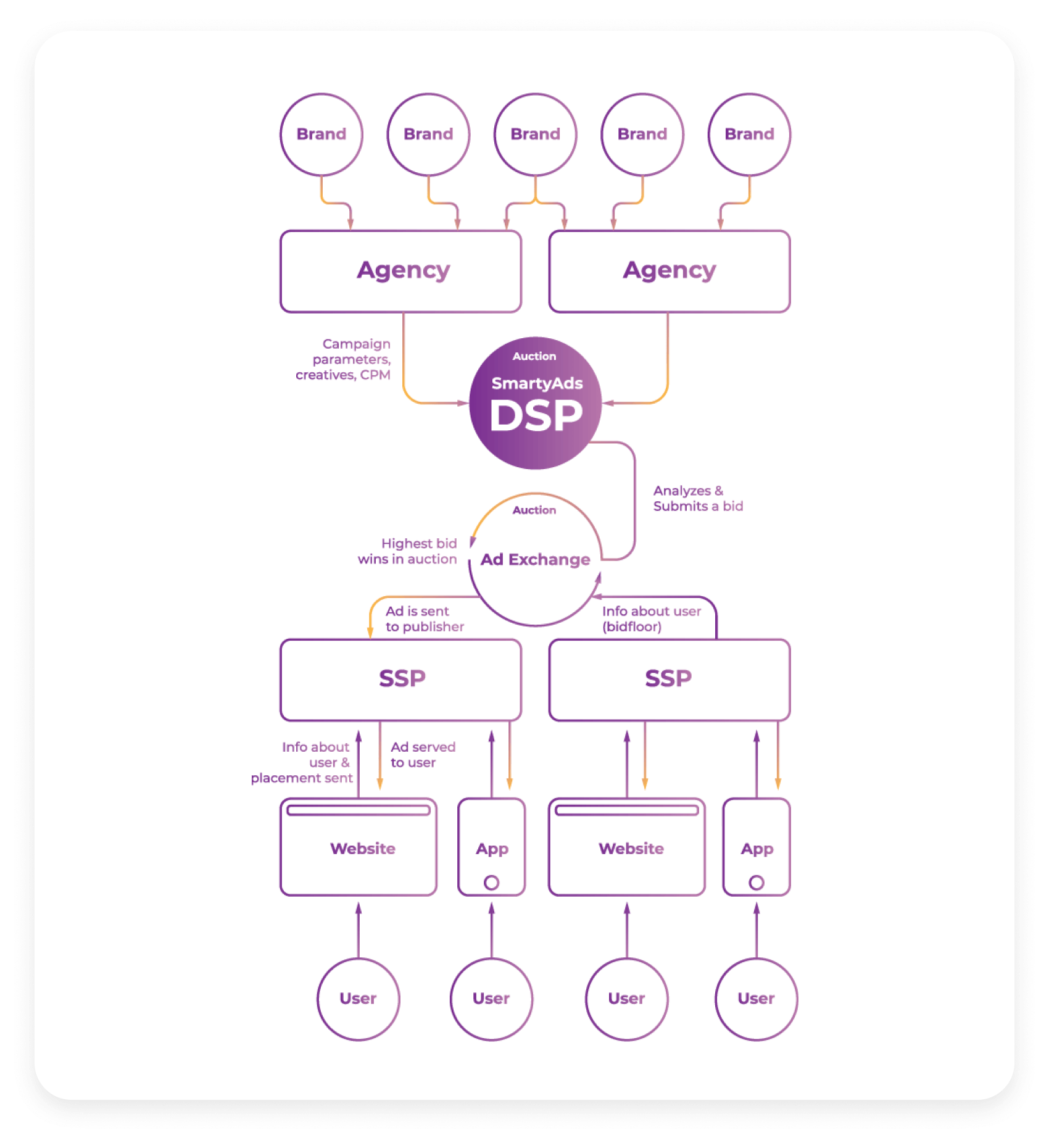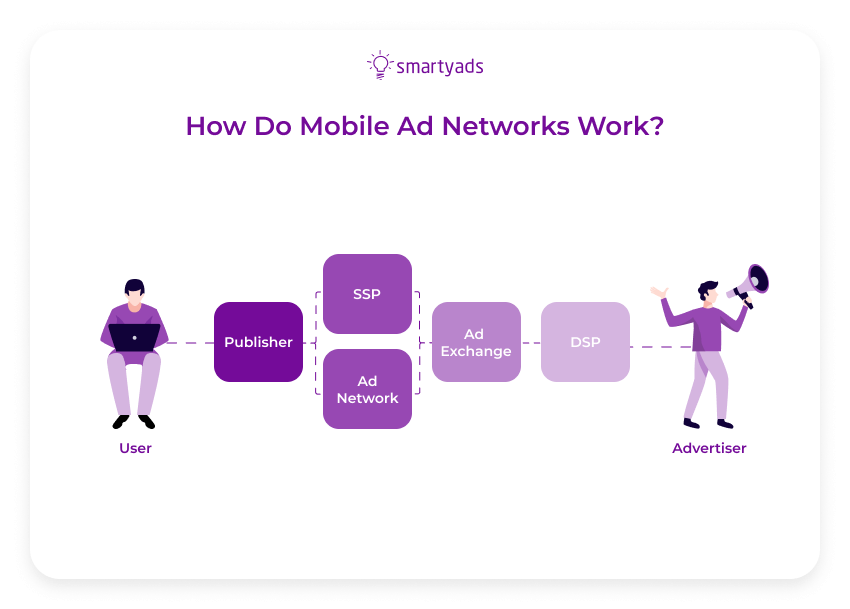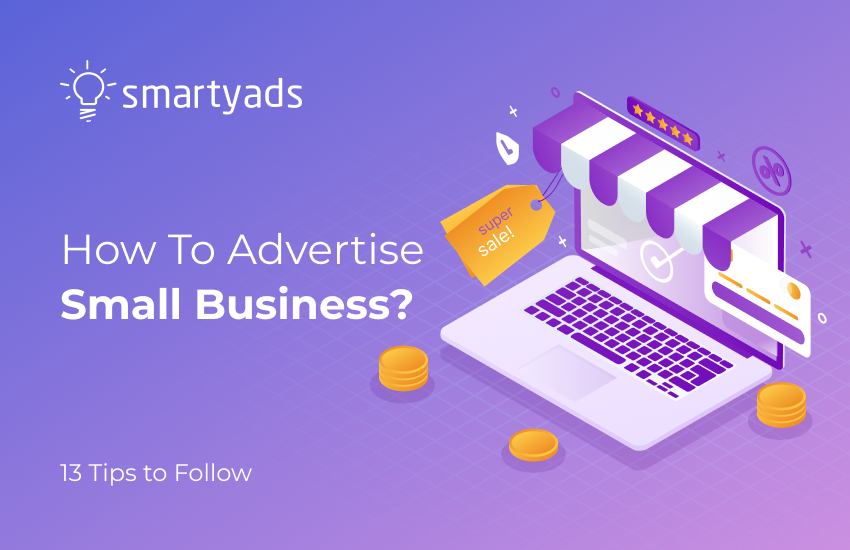Your website or blog can easily become a source of stable revenues if managed properly. It can complement your publication with highly targeted, relevant ads.
With digital advertising opportunities, publishers passively earn thousands of dollars by simply displaying ads to target audiences at the right time and in the right context.
But how do you actually become a digital publisher? And what is the best way to sell ad space on your website?
In this article, we will discuss how to start online advertising and will look at the three most effective methods to sell ad space.
Let's begin with initial guidelines for all publishers to find out how to sell ad space and monetize ads on your website. Before you actually start selling ad space on your website, make sure you fulfill all the requirements as a digital publisher.
Basic Requirements for Web Publishers
Your site must have a sufficient amount of traffic
Your site or blog must be active for at least six months and generate a sufficient amount of traffic. To apply for Google AdSense, publishers must attract around 250 unique visitors per day to complete the necessary conversions.
Most of the website's traffic must come from the United States, the United Kingdom, Canada, Australia, and Europe. Invalid click activity, usage of malicious malware, and generation of fake impressions are strictly prohibited.
Care about the quality of your content
The digital content must be original, relevant, and useful for users; this way selling ad space will be easier. Advertisers prefer theme-based, niche content highlighting specific topics such as travel, lifestyle, sports, cars, etc.
The website must offer rich content and have a reasonable amount of pages (at least 20 to 30 pages, articles, or blog posts) for ad space.
Be aware that websites that feature prohibited content categories — pornography, hate speech, blog posts with explicit violence, weapons and ammunition, illegal drugs, alcohol and tobacco, gambling and online casinos, spyware, malware, or hacking software — will be rejected.
Optimize your website design
Think about the design and navigability of your website. Your platform must be professionally designed and visually attractive to end users. It must be easily navigated, simply structured, and provide a flawless user experience.
If you want to fill your web page with ad spaces, you need selling ad space, so load time and latency are important parameters. Make sure your web page is mobile and tablet compatible.
Make sure that the information on your website is sufficiently transparent
The information on your platform must be clear and open to the general public. Make it easy for visitors to find your contact information and reach you whenever needed.
If your website already has a solid traffic flow, a dedicated niche audience, and high conversion rates, it's time to consider various methods for selling ad space.
Below, you will find the three most popular ways to sell advertising space by publishers.
Affiliate Marketing
The fastest and possibly easiest way to start earning money with your website is to become an affiliate publisher by joining an affiliate program.
Affiliate marketing or affiliate advertising is when a website publisher, blog owner, or business entity agrees to promote a product or service in exchange for a commission.
In affiliate marketing, the affiliate acts as a middleman, connecting potential customers with the merchant's offerings. The affiliate earns a commission for every sale, lead, or desired action generated through their promotional efforts. This commission is typically a percentage of the sale or a fixed amount agreed upon between the affiliate and the merchant.
Usually, website owners place affiliate links, banners, and text ads and convert their organic traffic into referrals for media buyers.

The minimum requirements for publishers to join affiliate programs include:
- an individual domain name;
- at least one email account linked to that domain;
- a website layout that supports ads of various formats.
Also, you should have a responsible person who monitors emails and ads and can customize the website if necessary. Almost anyone who owns a website can become an affiliate publisher.
You simply have to become a member of an affiliate network (not ad networks), such as Clickbank, Amazon Associates, eBay, or Commission Junction. Affiliate networks connect publishers and advertisers and offer thousands of affiliate marketing programs.
As a rule, these networks charge advertisers with a setup and license fee. However, it is free of charge for publishers.
Affiliate marketing strategies
Affiliate marketing strategies and ways to approach the audience vary greatly, and it is not only about inserting affiliate links. For example, in order to advertise a retailer's product, the publisher may write a product review, rank the product, or compare prices of two similar products.
If you have a base of followers or loyal viewers who trust your choice, you can also show people how to use the product, try on new clothes, test after-shaving lotion, or take a new car for a test drive.
This type of digital advertising is performance-based because the publisher's profits come from generating clicks, leads, or sales.
Following an 80/20 rule
As a rule, 80 percent of affiliate publishers are paid on a PPS basis (pay-per-sale), 18 percent on CPA (pay-per-action), and the remaining programs use CPC (cost-per-click) and CPM (cost-per-thousand impressions) as compensation methods. Learn more about pricing models: CPC, PPC, CPM, CPI, CPA, CPL: Which Online Ad Models Are Best?
It's worth mentioning that affiliate advertising can turn a website or blog into a real cash cow. The commission for a user clicking on the affiliate link and purchasing a product can be somewhere around 30 to 50 percent. That means if the merchant's product is $50, a publisher can earn $25 just for referring the buyer.
Programmatic Advertising
One of the best ways to sell ad space is display advertising. Whether you are a blogger who just started gaining an audience or a respectable publisher, programmatic advertising has something to offer. The secret is in the automation of the buying and selling ads processes.

No need to look for media buyers or wait for a suitable affiliate program; display ads will match appropriate ads with relevant audiences. Read more information about what is programmatic advertising technology.
How to start using automated advertising?
You have to register as a publisher on a supply-side platform (read about what is a supply-side platform). Then, you have limitless opportunities to sell your ad space online.
Publishers may choose to sell ad space through open real-time bidding auctions (read more information about the importance of RTB), engage in private marketplace direct deals, establish one-to-one relationships with buyers via preferred deals, or enjoy the capabilities of programmatic direct.
Programmatic advertising enables publishers to optimize selling ads, streamline operations, maximize revenue, and receive powerful insights from real-time statistics that allow better customization of the ad space in the future.
What opportunities do you get while selling ads programmatically?
Due to opportunities presented by display advertising, publishers finally use data and technology to boost sales. You will be able to understand your audience better, and machine-learning algorithms will deliver highly targeted ads that perfectly fit your audience's interests.
With programmatic buying (read about things you need to know about programmatic buying), publishers are instantly connected to the demand sources locally and worldwide.
Ad networks provide access to a large number of advertisers. Plus, publishers understand better the value of their ad space and inventory when putting it into a highly competitive bidding environment.
How does it work?
An ad network is a platform that connects advertisers and publishers (website owners or app developers) to facilitate the buying and selling of online advertising space. Ad networks act as intermediaries, helping advertisers reach their target audience by placing ads on publisher websites or apps.
The primary purpose of an ad network is to match the right ads with the right publishers based on various factors such as target audience, website content, user demographics, and geographic location. Ad networks offer a range of ad formats, including display ads, video ads, native ads, and more. They can accumulate desktop or mobile inventory.

There are several famous and widely used ad networks in the digital advertising industry. You've probably heard of or even used Google AdSense, which is also an ad network.
However, in addition to ad networks, programmatic also relies on ad servers and ad exchanges. An ad server is a technology platform that manages the delivery and tracking of ads. An ad network connects advertisers with publishers to facilitate ad buying and selling.
The ad server integrates with the ad network to fetch and deliver ads to websites or apps based on targeting criteria. The ad server collects data and provides reporting tools for performance monitoring and optimization. Together, they enable publishers to monetize their inventory and help advertisers reach their target audience.
An ad exchange, in turn, is a digital marketplace where advertisers and publishers come together to buy and sell ad inventory in real time through automated auctions.
It is a platform that brings together various ad networks, demand-side platforms (DSPs), and supply-side platforms (SSPs) to facilitate programmatic buying and selling of ad space online.
For publishers, ad exchanges help them place their advertising inventory. This inventory includes free ad space on their websites, apps, or other digital properties.
Programmatic advertising knows no boundaries
With display advertising, publishers choose how many ads appear on the page, select the ad formats (text, banner, video, pop-ups, interactive, etc.), the content of the ads, and even colors. When you become a digital publisher and sell through the SSP, you always set price floors; therefore, you never lose.
The ad-serving ecosystem allows publishers to sell ads online for maximum profit and get 100 percent fill rates. Depending on your objectives and thanks to ad networks, you can choose to work with local or global brands.
Display advertising is the most effective advertising method for publishers because it requires a minimum investment, is easy to begin with, and is fully automated.
Therefore, more than half of the manual work — finding media buyers and negotiating prices — is minimized and done by machines and ad networks. Publishers get simplified operations and maximized yield.
Selling Ad Space Directly
Finally, a publisher looking for the most effective way to monetize their website might consider direct ad sales.
This method excludes the middleman (ad networks, ad exchanges, affiliate networks) and allows publishers to make direct contact with media buyers, earning significantly more money. With that said, this method is more time-consuming and requires a lot of effort and patience.
Benefits of selling ads directly
When you sell advertising space directly, publishers promote a retailer's product or service, receiving 100 percent of the advertising revenue. Furthermore, publishers set their own pricing and remain in control over decisions on how to charge buyers and which payment method is most desirable.
Finally, publishers choose which brands to work with, establishing unique business partnerships that are both long-lasting and lucrative. With direct sales, media owners ensure stable revenue streams and never have headaches because of clicks, conversions, and sales.
The trick is that to sell ad space directly means finding advertisers manually and personally negotiating terms with them. Selling ads directly may be daunting, especially for small and medium websites with average traffic.
So, how do you find people who would like to advertise on your website?
First, you can create an "Advertise" landing page and a media kit. Second, you can check similar niche blogs or competitors' websites and see what brands sponsor those platforms.
Next, you can try contacting those brands and offer a partnership on your terms. You may also check the forums or chatrooms where website publishers share their experiences and provide useful tips on how to advertise directly.
Selling ad space directly involves personal contact with retailers and direct negotiations and agreements between two parties.
Before offering ad space on your website, you must know the real value of your target audiences and be able to estimate the potential revenues. Also, you can read this article — A quick guide to website and blog traffic monetization.
Where Do I Start?
Digital publishers face an important choice when it comes to advertising. In this article, we covered three major methods of selling ads online, each with advantages and disadvantages.
When choosing a way to advertise, think about whether you fit the requirements. Also, consider your objectives:
- Do you want to advertise content-related products?
- Do you want to have a separate page for ads?
- Do you wish to receive maximum revenues with programmatic?
- Do you want a specific brand to sponsor you with direct sales?
Your answers to these questions will lead you to the right decision. Whatever you choose, SmartyAds is always glad to assist you! So, if you are still interested in selling ads on your website programmatically, please feel free to contact us!
Become a digital publisher and unleash your audience's potential. Sell ads, receive revenues, and think about how to monetize them even more. Follow us for more information about programmatic ads!
Ready to advertise with impact? Register at SmartyAds DSP. Need to manage your monetization and gain more from ad serving? Register at SmartyAds SSP.




